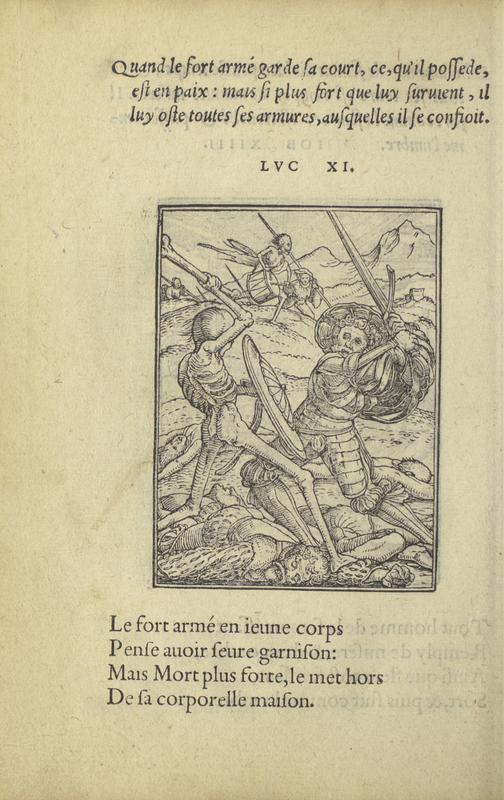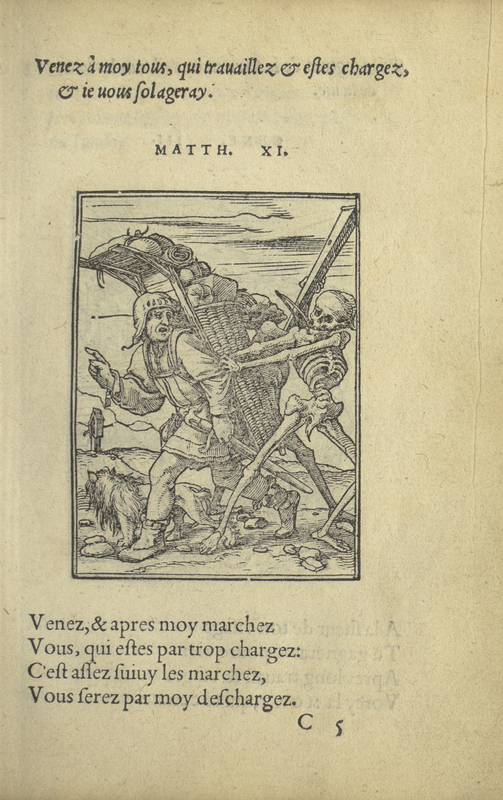Richard C. Kessler Reformation Collection
The Richard C. Kessler Reformation Collection was established in 1987, when Richard and Martha Kessler donated their private collection of Reformation imprints and manuscripts to Emory University. These materials were combined with Reformation holdings at the Pitts Theology Library, and an effort was launched to enlarge and sustain this collection in the years to come. An advisory committee of Lutheran laypersons and clergy and of Candler School of Theology faculty and administrators oversees the nurture of the collection and its programs. The Reformation Notes newsletter provides semiannual updates on the growth of the collection, and the Reformation Day at Emory program of music and lectures each October celebrates the collection and its contributions to music, history, and theology. In the sixteenth century the social and theological movements of central Europe, known collectively as the Reformation, critically shaped religion, law, education and other institutions in the West, and their long shadow has extended even to the present. The purpose of the Kessler Collection is to document these changes by collecting print and manuscript materials down to 1570 by Martin Luther (1483-1546) and those whom he influenced or engaged in debate. In this way historians and theologians will be able to hear the full range of voices that were raised in this dynamic period. The holdings of the collection now exceed 4,000 items, a mark approximated by only two other libraries in North America; no American library approaches the Kessler Collection's 1,000+ publications by Luther himself.
-
 Still image
Still imageInitial Letter "C"
Holbein, Hans, 1497-1543A woodcut initial letter "C" decorated with plants and a fish. -
 Still image
Still imageInitial Letter "C"
Holbein, Hans, 1497-1543A woodcut initial letter "C" decorated with plants and a fish. -
 Still image
Still imageInitial Letter "C"
Holbein, Hans, 1497-1543A woodcut initial letter "C" decorated with plants and a fish. -
 Still image
Still imageInitial Letter "S"
Holbein, Hans, 1497-1543A woodcut initial letter "S" decorated with plants and a fish. -
 Still image
Still imageThe Execution of Death
Holbein, Hans, 1497-1543A woodcut depicting a skeleton (= Death) being executed as a man and woman look on. In the center is an hourglass, the reminder of human mortality. The woodcut is accompanied by a verse from Ecclesiastes 7 translated into French (top) and then reformatted into verse (bottom). -
 Still image
Still imageThe Last Judgement
Holbein, Hans, 1497-1543A woodcut depicting Jesus siting on the earth, surrounded by a cloud of witnesses, for the last judgment. The woodcut is accompanied by verses from Romans 14 and Matthew 28 translated into French (top) and then reformatted into verse (bottom). -
 Still image
Still imageIl partira les despoilles auec les puissans
Holbein, Hans, 1497-1543A woodcut depicting a group of putti (cherubs) displaying the spoils of battle (armor). The woodcut is accompanied by a verse from Isaiah 53 translated into French (top) and then reformatted into verse (bottom). -
 Still image
Still imageCeux qui ont leur uentre pour leur Dieu
Holbein, Hans, 1497-1543A woodcut depicting a group of putti (cherubs) parading with grapes and vines. The woodcut is accompanied by a verse from Philippians 3 translated into French (top) and then reformatted into verse (bottom). -
 Still image
Still imageLes enfans sont trebuchez sur le bois
Holbein, Hans, 1497-1543A woodcut depicting a group of putti (cherubs) returning from a hunt. The woodcut is accompanied by a verse from Lamentations 5 translated into French (top) and then reformatted into verse (bottom). -
 Still image
Still imageIl sera percé da sagettes
Holbein, Hans, 1497-1543A woodcut depicting a putto (cherub) holding a shield and an arrow symbolizing the prohibition given to the Israelites to not go up on the Holy Mountain, or Mount Sinai. The woodcut is accompanied by a verse from Exodus 19 translated into French (top) and then reformatted into verse (bottom). -
 Still image
Still imageThe Beggar
Holbein, Hans, 1497-1543A woodcut depicting an injured beggar sitting outside the house of a wealthy family, who ignore him. The beggar's hands are pressed together in supplication, but Death is not presence to release him from his misery. The woodcut is accompanied by a verse from Romans 7 translated into French (top) and then reformatted into verse (bottom). -
 Still image
Still imageThe Waggoner
Holbein, Hans, 1497-1543A woodcut depicting two skeletons (= Death) destroy a wagon full of wine barrels while the waggoner looks on in distress. The woodcut is accompanied by a verse from 1 Samuel 9 translated into French (top) and then reformatted into verse (bottom). -
 Still image
Still imageThe Blind Man
Holbein, Hans, 1497-1543A woodcut depicting a skeleton (= Death) leading a blind man by his cane. The woodcut is accompanied by a verse from Matthew 15 translated into French (top) and then reformatted into verse (bottom). -
 Still image
Still imageThe Robber
Holbein, Hans, 1497-1543A woodcut depicting a skeleton (= Death) taking hold of a man who is in the proess of robbing a woman who is carrying a basket of goods. The woodcut is accompanied by a verse from Isaiah 38 translated into French (top) and then reformatted into verse (bottom). -
 Still image
Still imageThe Fool
Holbein, Hans, 1497-1543A woodcut depicting a skeleton (= Death) playing the bagpipes as he pulls a fool down the road. The woodcut is accompanied by a verse from Proverbs 7 translated into French (top) and then reformatted into verse (bottom). -
 Still image
Still imageThe Drunkards
Holbein, Hans, 1497-1543A woodcut depicting a skeleton (= Death) pouring wine into the mouth of one of a group of revelers as one of his companions vomits over the side of the table. The woodcut is accompanied by a verse from Ephesians 5 translated into French (top) and then reformatted into verse (bottom). -
 Still image
Still imageThe Gamblers
Holbein, Hans, 1497-1543A woodcut depicting a skeleton (= Death) fighting a demon over one of three gamblers at a table. The woodcut is accompanied by a verse from Matthew 16 translated into French (top) and then reformatted into verse (bottom). -
 Still image
Still imageThe Soldier
Holbein, Hans, 1497-1543A woodcut depicting a skeleton (= Death) dueling a soldier on a battlefields as another skeleton plays a drum in the background. The woodcut is accompanied by a verse from Luke 11 translated into French (top) and then reformatted into verse (bottom). -
 Still image
Still imageThe Young Child
Holbein, Hans, 1497-1543A woodcut depicting a skeleton (= Death) taking a child from their home as their mother is in the process of preparing a meal and another child cries after them. An hourglass, the reminder of human mortality, rests on the floor. The woodcut is accompanied by a verse from Job 14 translated into French (top) and then reformatted into verse (bottom). -
 Still image
Still imageThe Ploughman
Holbein, Hans, 1497-1543A woodcut depicting a skeleton (= Death) driving the team of a ploughman. An hour-glass, representing time, hangs from the skeleton’s neck. The woodcut is accompanied by a verse from Genesis 3 translated into French (top) and then reformatted into verse (bottom). -
 Still image
Still imageThe Peddler
Holbein, Hans, 1497-1543A woodcut depicting a skeleton (= Death) tugging at a fleeing peddler. A lion stands at the feet of the peddler, looking away. The woodcut is accompanied by a verse from Matthew 11 translated into French (top) and then reformatted into verse (bottom).